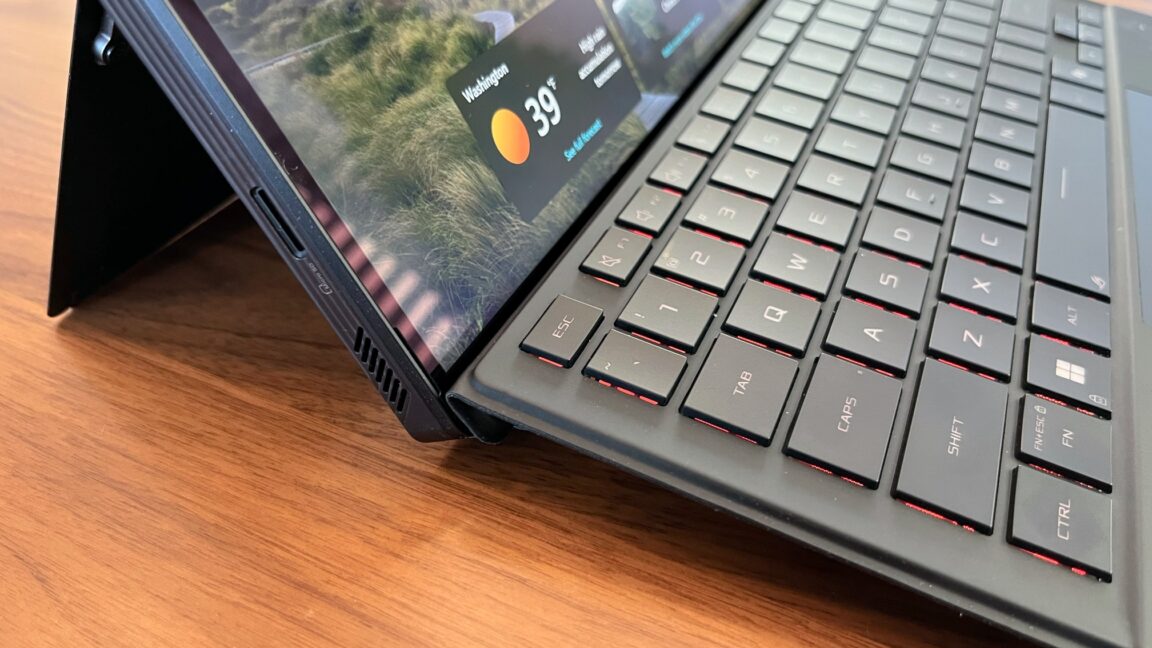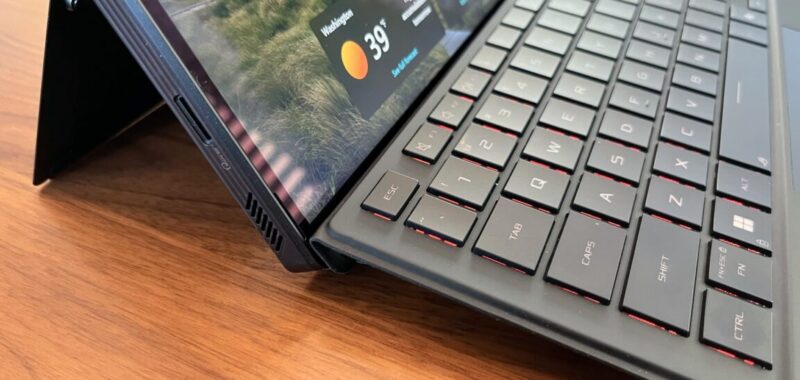
It’s not quite in the realm of dedicated desktop GPUs, of course. If you’re playing at 1080p, it’s a formidable gaming device for modern titles. But if you want ray tracing or the 1600p experience, you’ll be seeing frame rates below 60 fps. The only work-around there is an eGPU setup, and that is, well, something we’re not testing for here (or recommending for all but the most niche of workflows or gaming desires).
Wrapping up
I’ve played the just-released action RPG Avowed, a bit of Elden Ring, some Hitman: World of Assassination, and the charming little game SteamWorld Heist 2 on the Z13, using either a controller or the detachable keyboard. I’ve docked the Z13 to my TV, and after some typical Windows-second-screen wrangling, I found it pretty fun to play just slightly older games at 60-plus frames per second in my living room, powered by this little glowing slab underneath.
I’ve also used the Z13 as my primary computer on a plane trip and long weekend. When there’s a flat surface to type on, it’s a Windows laptop with almost no lag. When I have to hold it or rest it on my lap, it’s wonky, at least until I adapt to how Windows wants me to work. When it was in my backpack, it felt a bit heavier than the iPad I’m used to, but I could probably get over that after a trip or two, if I had a modern game I wanted to bring along.
AMD’s integrated graphics capabilities are the star of the show, pushing forward the notion of what a gaming tablet can do, all in a form that’s probably as thin as thermodynamics allows.
This post was updated at 9:20 a.m. to add some more context to the benchmarking results. It was updated again at 1:55 p.m. with a new photo, more details on fan noise, and to fix some weight number discrepancies.

